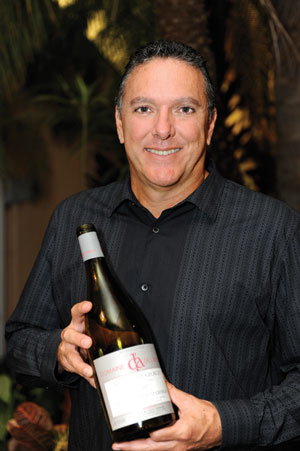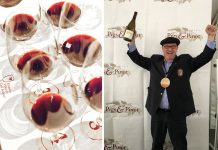Story by Charles Fredy
 You’re in a fine restaurant, perusing the wine menu, when you come upon this description for Vouvray, a Loire Valley chenin blanc: “Aromas of bruised red apple, honey, chamomile, wasabi, tangerine, pronounced chalk/limestone and wet wool.”
You’re in a fine restaurant, perusing the wine menu, when you come upon this description for Vouvray, a Loire Valley chenin blanc: “Aromas of bruised red apple, honey, chamomile, wasabi, tangerine, pronounced chalk/limestone and wet wool.”
Wet wool? Have the French started soaking their socks in wine?
No, of course. Winemakers use such descriptions to approximate the flavors and aromas you’ll find in a particular wine. (We’ll get back to the wool in a bit.) But how do the flavors of fruits and spices, minerals and more, get into wine?
Each grape varietal has its own flavor footprint whose characteristics you can modify, but not completely change. A pinot noir will almost always have a cherry taste, whether it’s grown in Sonoma or France or New Zealand; while the darker, thicker-skinned grape of cabernet sauvignon has a taste reminiscent of black fruit.
Sometimes resemblance happens because the same chemical compound occurs naturally in two different foods. The tangy taste of apple found in most white wines comes from malic acid, the same tart acid in apples. The strong black-pepper aroma of northern Rhone syrah derives from the identical compound that gives black pepper its spicy jolt.
Other factors play a part in creating a wine’s flavor profile, beginning with where the grapes are grown: the soil, the climate, whether the vineyard has a sunny southern exposure; whether it’s near a river that moderates temperatures and adds moisture to the air. . . . Slopes that keep the soil well drained force roots to dig deeper for water and nutrients, slowing the vine’s growth, concentrating the plant’s flavors in the grape, and giving the fruit time to pull more complexity from the terroir.
Vineyard management also influences flavors. For example, sauvignon blanc is a vigorous, leafy varietal. If you don’t want pungent, herbaceous flavors to overpower the wine, you can trim back the foliage to get more sun on the grapes.
Whatever flavors the grape acquires, yeast unlocks during fermentation, and different strains of yeast create different results. Chardonnay is a great example: One type of yeast may amplify tropical fruit flavors, another more citrusy tones. A yeast that converts malic to lactic acid will change a tart wine to a more lush, round, creamy feel.
Wines aged in wood develop more flavors than those that age in steel. The size and age of the barrel makes a difference. So does the type of oak–for example, American oak can add a heavy flavor of vanilla or even dill. Charring the barrel creates compounds that react and combine with the wine. Caramel, coffee, chocolate, cinnamon, vanilla, clove and nutmeg are all flavors deriving from the wood.
Add to this the many other variations that can happen in the process, and you begin to see why winemaking is both an art and a craft.
And sometimes–a discovery. Explore wine with a sense of adventure, and even an aroma that hints at wet wool can become an exotic and (dare we say?) acquired delight.
Test your flavor finesse with these:
- White-pepper and green flavors–Loimer, Lois, Gruner Veltliner, Austria, 2011
- Herbaceous, grass and bell-pepper flavors–Frogs Leap, Sauvignon Blanc, Napa Valley, 2011
- Red- and black-cherry–EnRoute, Pinot Noir, Russian River, 2010
- Black pepper–Alan Graillot, Crozes-Hermitage, Rhone, 2010
- Crayons, red- and black-fruit jams–Turley, Zinfandel, Old Vines, St. Helena, 2010





